WHEELS are the cornerstone of any hot car build. Some projects strike just the right balance between form and function when it comes to rolling stock, but if you get the balance wrong it can leave your ride looking, well, shite.
First published in the March 2021 issue of Street Machine. Photos: Mark Boxer & SM Archives
The growth of Australia’s aftermarket wheel industry boomed throughout the late 1960s and 70s, and in recent years it’s become easier and cheaper than ever to have some classic imported rims of a bygone era land on your door step.
To help you find the perfect rollers for your street machine, we look at some of our sport’s most iconic wheels. This is not an exhaustive list by any means – if we’ve missed your favourite, let us know!
And, unless you’re of a certain age, you can be forgiven for not realising that a massive homegrown mag wheel industry sprang up in Australia in the mid-to-late 1960s. Some folks will call any old Aussie mag a ‘Tasman’, but in truth there were dozens if not scores of local wheel manufacturers in the days before imports became readily available.
These included such names as Amos, Eddie Thomas, Hinchcliffe, Herbert and Skoglund, among many more. Some only ever made a handful of rims, while others went on to become massive concerns. We did an extensive story on these in Street Machine Hot Rod #11.
Appliance Striker
THE Appliance brand was well known in the States and had a variety of designs on offer; however, it was the Striker model that made the biggest inroads Down Under.
Bling before the term was coined, Strikers were a staple of both the panel van heyday and the subsequent 1980s street machine movement, and were offered in either an all-chrome finish or a fancy gold-centred version.
Our most famous Striker wearers include Dave ‘Bam-Bam’ Martin’s chopped HQ sedan (above, top), the Rock 1 and 2 guises of Howard Astill’s XA Falcon sedan (above), and the late John Roach’s ‘Checkmate’ HJ panel van.
Center Line Convo Pro
RUNNING a close second to the Auto Drag in the Center Line range, the Convo Pro was a product of Center Line’s foray into fresh designs in the late 1980s. Affectionately nicknamed ‘sockets’ (due to the serrated rim design that resembles the tools), the Convo Pro found favour with car builders as we entered the 90s.
Still a popular choice today, Convo Pros attract reasonable dollars and are available as a re-release from the reinvigorated Center Line brand and, dare we say it, via the counterfeit market.
Famous wearers of the model include our very first Convo Pro-clad feature car, Stan Shaw’s blown ’57 Chev, and the early-2000s era of Gary Myers’s GM-176 (above).
Center Line Auto Drag
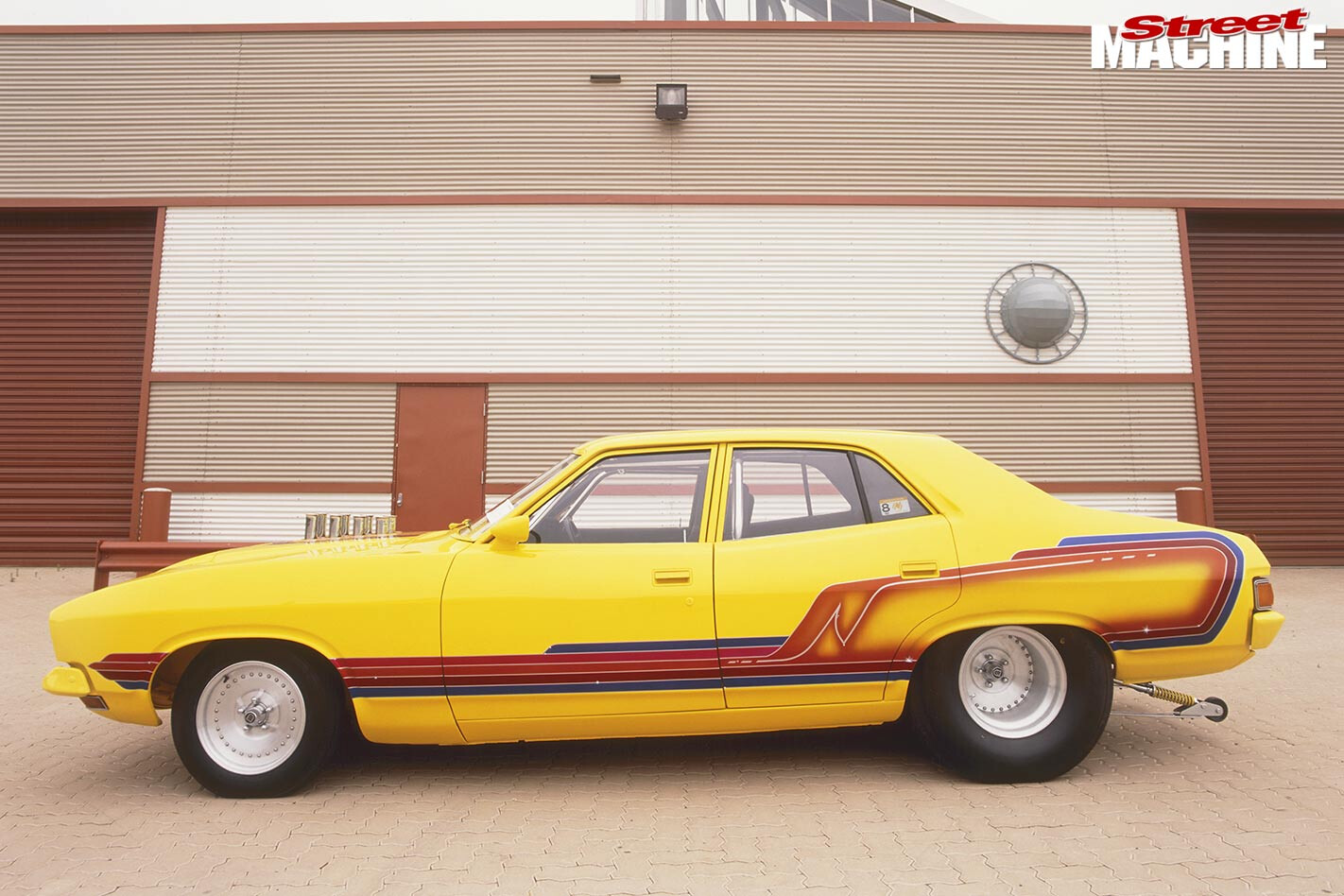
IS THIS the ultimate aftermarket wheel? Born directly from the US drag racing scene, the Auto Drag is still considered to be the benchmark tough rim by many – especially South Australians. The ‘Adelaide wheel’, as it’s affectionately known, is an integral part of the clean, tough street-car look that Croweaters have monopolised since the 1980s.
Auto Drag fans are a devoted lot and have no time for the re-released version (following the original company’s demise a few years ago), nor the myriad copycats that are available. As a result, prices have skyrocketed for original Auto Drags, leaving many in the USA – where these rims aren’t considered anywhere near as cool – scratching their heads.
Need a good example of a quality ride shod in these ‘brake cookers’ (as they’ve been disparagingly labelled by morons)? Take your pick – there are so many iconic cars rolling on Auto Drags, whether in satin or full-polish finish. These include George Anthony’s XC sedan (above, top) and both Owen Webb’s ‘Wild Thing’ XY pro streeter (above, centre) and his ‘Bruiser’ XW ute (above).
Cragar S/S
WIDELY regarded as one of the most beautiful wheel designs of all time, the Cragar Super Sport – or S/S for short – has a 50-year legacy Stateside. Considered expensive and exotic in the early years of our hobby, it wasn’t a regular chose on local shores, but that in no way kneecaps its iconic status – Chic Henry’s legendary ’62 Impala (above) and the ‘Red Rat’ LTD-fronted XD Falcon (owned by a bloke known only as George) saw to that.
Speedy Wheels has made an Australian version called the Kalifornia for many years, and although that may satisfy some, you definitely can’t beat the real thing, and they’re still hugely popular and in production today, albeit with a ‘flatter’ spoke design.
Deep-dish Chromie
A PRODUCT of the early years of the Australian hot and custom car scene, deep-dish or reversed factory steel wheels – either painted or as ‘chromies’ – were a direct result of what our pioneering generation were spying in US magazines. Aftermarket sports or ‘mag’ wheels were exotica, so these deep-dish wheels were a far simpler way to earn some street cred or run wider tyres if the width allowed.
Still a popular choice for many period-style builds, deep-dish chromies are affordable and are available new once more in some pretty awesome sizes. However, the cost of chroming parts these days makes them an expensive venture to build from scratch.
Past chromie masters include Greg Hocking’s ‘Green Knight’ HG pano (above) and John Copley’s super-tough HK Monaro.
Aunger Hotwire
AN EARLY design from our local one-piece alloy wheel industry, the Hotwire was made most famously by Aunger, and was a regular sight on Touring Cars of the 1970s and early 80s.
The Hotwire mag fell out of favour for many years, seemingly relegated to trailer use only, but the recent resurgence in factory muscle cars and period accessories has seen them being produced once more, especially in flare-filling sizes.
Original versions are still readily available on the second-hand market for fair prices (depending on size), but be sure to keep the thinners and grease handy if you’re looking to resto a set – they can be a bitch to repaint!
The ‘Techno’ Mad Max ute of John Zeigler and Bill Hearne’s tidy LX sedan were two well-known Hotwire wearers.
Dragway Five-spoke
WHEN young hot rodder Ian Splatt started his Drag-a-way engineering business in the late 1960s, little did he know that wheel production was to become his bread and butter for the next five decades. Modifying wheels had always been part of his repertoire, but the addition of the five-spoke to his burgeoning range of rims in the 1970s became his calling card for years to come.
Locally available in a wide range of sizes – and, more importantly, stud patterns to suit early Holdens and early Valiants – the Dragway five-spoke wheel found its way onto everything from your local street bruiser to high-end show winners.
Well-known wearers of the product include the first incarnation of Tony Anthony’s red XY Falcon (above) and Steve Abbott’s 454-powered, big-grilled panel van, VANRAT.
El Camino/Hustler
MODELLED on the ever-popular American Racing Torq Thrust five-spokes, the ROH El Camino brought racing to the street with its one-piece alloy, sharp-spoke, 14x6in-only design. The Ford/ROH relationship was further strengthened with the supply of the ‘Option 52’ sports wheel, which used the El Camino centre casting attached to a steel six-inch rim and found its way onto many Falcons from XW to XB.
Aunger marketed a similar wheel dubbed the Hustler; however, the five-stud version featured a smoother spoke design and was available in 13×6 or 14×7 only. Our own Telfo had a set of Hustlers on his EJ custom (above, top).
12-slotter
ORIGINALLY released in the States as a Ford sports wheel option, 12-slots were soon adopted Down Under by Ford Australia. The company’s local supplier, ROH, saw a gap in the market for a chromed version, which it made available in both four- and five-stud patterns.
The Ford association was never forgotten, but nobody cared; 12-slots soon found their way onto any vehicle they would fit – Holdens, Valiants, Toyotas, you name it – while massive, cube-like 14x10s were easily swallowed by the rear arches of a Falcon hardtop, making for an iconic and popular combination.
In recent years, the purist view of 12-spokes being a Ford-only rim has reared its ugly head, and its acceptance on anything but Blue Oval is considered taboo. But hey, you could buy them at Kmart back in the day, and they were made in HQ pattern for a reason, people!
Graham Cowley’s flip-front HR ute (above) and Mark Maait’s ‘Holy Toledo’ R/T Charger were two legends that wore them to perfection.
US Mags/American Racing Indy
Whether you prefer ‘jellybeans’ or ‘kidney mags’ as a general tag for the many knock-offs, it is the US Mags (later American Racing) Indy ‘slot’ wheel that is the ruler of them all. Derived from the true magnesium designs made popular through the golden era of drag racing – nicknamed ‘mags’ for short and hence how that term was coined – the five-hole design epitomises the ‘mag’ wheel concept brought to the masses, with street versions made of alloy by numerous manufacturers worldwide.
Again available to purchase new, the humble bumhole mag is a popular choice for those wanting to ride the nostalgia wave or the many who never fell out of love with it.
Rulers of the slot roost include Mick Curran’s stiffy-making ‘Terminator’ HQ and Kevin Monk’s equally arousing Dodge Daytona, which steamrolled through the 80s with whopping 15×12 versions. My own ‘Disturbia’ CL Chrysler van was built around a pair of ex-Ralf ‘Designs by Ralfus’ Severyn 15x10s to truly capture the nostalgic feel. The current slot king would have to be Shane Harvey’s GRUNTA HZ ute (above).
Simmons
IT WAS impossible to choose between the mesh-style Simmons V5 or Simmons five-spoke B45 designs, so we’ve given them equal billing.
Tony Simmons’s three-piece rims were used on big-banger Group C racers and Sports Sedans of the early 1980s, but he opened up a world of opportunity for street machiners when he released road-approved versions of his designs in all manner of sizes and stud patterns.
Famous B45 wearers include the SMOTY-winning HQ of Ron Barclay and Colin Townsend’s fat FJ (above), while V5s left their mark on cool rides such as Jason Fitzallen’s mega-graphics LC Torana and our very own Castrol FMX giveaway A9X.
Weld Prostar & Draglite
WHEN American Sprintcar driver Greg Weld released his first range of wheels 50 years ago, it was hard to imagine how great their international and local impact would be. Here in Australia, the fraternal Weld twins – ProStar and Draglite – became the next style choice following the early saturation of Auto Drags during the pioneering years of our local pro street scene.
Available in both a two-piece construction and a less popular one-piece steel ‘street’ design, the original ProStars and Draglites continue to be a popular choice for street and race use alike, with a variety of sizes and finishes available for all applications.
The Weld name has seen a resurgence in recent years at the forefront of a new breed of mixed-diameter street/race wheel pairings, born from the company’s original AlumaStar design and beadlock options.
How can we go past Rob Beauchamp’s VL Calais (above) as a beaut example of Weld ProStars in all their glory, while the Draglites on Bill Murfin’s SMOTY-winning HT Monaro are perfection.
HONOURABLE MENTIONS
DRAGWAY INDY
ANOTHER Ian Splatt local icon, the Dragway Indy was influenced heavily by the Center Line Indy Champ 500 range but, importantly, made to suit popular local stud patterns. Heavy hitters in the Indy arena include Dave Bennett’s gorgeous ‘Rat Attack’ HQ Monaro and SM’s very own, Yella Terra-sponsored ‘Five-Buck Streeter’ HK Monaro giveaway car.
GLOBELINE
CSA/Globe Globelines and their Cheviot counterpart, the Armorlite, were a cheaper local-market alternative to genuine Center Line Auto Drags. Popular in the 80s and early 90s, these wheels are probably best remembered in Globeline form on Ross Woods’s LC Torana and in Armorlite guise on Andrew Huggins’s HQ wagon.
The mere labelling of these rims incorrectly as ‘Center Lines’ will make an Auto Drag tragic’s blood boil. How do I know this? Because I am one of them!
INTRO BILLET
HUGELY popular with the showy set, Intro billets, and billet wheels in general, opened up a world of custom designs and sizes that were only restricted by your imagination. Thought to date faster than a Cheviot Sonic, only time will tell if they have the legs to become a retro wheel in the years to come.
Well-known purveyors of Intro billet designs include Adam LeBrese’s groundbreaking XC hardtop and Justin Gardner’s EH stunner. And while on the billet bandwagon, both the SMOTY-winning Mark Jones FAT57 and Al ‘Bundy’ Lucas’s HQ Monaro wore sets of local Dragway versions in their prime.
NEALE
WHEN Australian race-wheel guru Chris Neale adapted his wares for street use, their calling-card hub designs and multi-piece construction made them impossible to confuse with any other brand. They are best remembered for featuring on Craig Parker’s epic, SMOTY-winning TUFFXY Falcon.
ROH WILDFIRE
MODELLED very closely on the Cragar Mach 8, the ROH Wildfire was one of our first local one-piece alloy rims to be produced in a then-whopping eight-inch width. The Wildfire was a staple for many in the panel van heyday, with popular wearers including John Evans’s ‘Tangerine Dream’ HQ and the family van of one Mr Max Rockatansky.
TASMAN
WHILE the ill-informed will nearly always call any 1960s-spec Aussie sports wheel a ‘Tasman’ and make wild claims that they were illegal and that their mate’s mate’s mate had one fail, the real deal was the well-engineered and still-legal brainchild of NSW farmer, John Scott, who’d made a name for himself building beach buggies on shortened VW floorpans.
The Sydney-based Tasman wheel company was at the pioneering end of the local custom wheel era and released a number of full-steel or alloy centre/steel rim designs that featured extensively on hot rods, customs and newer cars in the late 60s.
The past decade has seen something of a Tasman revival, with a number of people going to great lengths – and expense – to refurbish what were at one time considered little more than a glorified hose reel.
US MAGS TURBINE
ONE of the most attractive wheels ever produced, the US Mags Turbine found its way to our shores in decent numbers, while a locally produced option came in fat little 13in versions for early Holdens. The late Mario Borg ran a set on the orange version of his groundbreaking FJ utility, and they also featured on the infamous ‘Blue Crush’ Valiant panel van.
WELD RACING
THE new must-have for Aussie street cred, the recent offerings from Weld Racing include designs such as the AlumaStar, Magnum, Vitesse and V-Series, offering both form and function. They are popularly chosen in a mix of diameters front to rear. Packing some serious grunt? Don’t forget to tick the beadlock option.
Lee Payne mastered the look on his drop-dead gorgeous ’71 Camaro, while Lucas Hurley’s blown AP6 Valiant oozes Weld style in droves.
MORE GLOBES!
BESIDES the Globeline, CSA offered a stack of other designs. The US Racer-esque Eliminator featured on countless cars in the 70s and 80s, while the Sprintmaster was factory fitment to XU-1 Toranas.
Most famous of all, the Bathurst Globe was commissioned by Ford Oz for fitment to the GTHO Phase IV. When the program was canned, Ford gave 200 sets in 7x15in size to Phase III owners so the rims could be homologated. They were later an option on XB Falcons and fitted to the XC Cobra and XD ESP. Countless knock-offs were made by other mobs, in sizes up to 10×15.
Interestingly, the Bathurst was originally dubbed Daytona, as they were inspired by the Ferrari hoops on the car of the same name.
TYRES
BF GOODRICH RADIAL T/A
SURE, you can joke that the ‘T/A’ stands for ‘Traffic Accidents’, but the humble BFGoodrich Radial T/A has been a mainstay of the old school for more than 40 years. This legendary tyre was there for us through the lean years when most other manufacturers stepped away from making fat sizes in 14 and 15in widths, and the raised white-letter option still at least offers a cool name compared to many other current brand offerings.
BRIDGESTONE EAGER
‘REAL Men Smoke Eagers’ was the 90s poster catch-cry when one Mr Chris Christou double-fisted his way onto bedroom walls around the nation in his legendary blue XY GT Falcon, HO775. Eagers not only looked the part but were actually a damn good tyre too, and you see the odd sizing pop up for sale on occasion.
Older readers among you will also remember the ‘Eager Maniac’ awards that emblazoned the rear cover of Street Machine; if you were crowned with this title you just knew you had made the big time.
BRIDGESTONE STEEL-BELTED 60
THE baby-boomer daddy of the Gen-X Eager, the Bridgestone Steel-Belted 60 white-letter screamed to the world its superiority when steel-belted tyres were in their infancy.
A staple of the 1970s and 80s custom panel van and street machine scene, 60s were a bold statement of superiority when all of your mates were still trying to stretch rag tyres onto their fat rims.
The only tyre to outshine these was the Mickey Thompson Indy Profile, but the awesomeness of these early M/Ts would happily see you bow down and let them take the kudos.
The Steel-Belted 60 is a rare sight nowadays, so if you find one in your travels, it’d be best to avoid ever driving on it – they haven’t been made new for decades.
MICKEY THOMPSON ET STREET
A mainstay of the modern-day Drag Challenge and Street-class crowd, the Mickey Thompson ET Street offers a compound construction and minimal tread blocks, balancing legality with maximum slick-like traction. Available in myriad sizes to suit many applications, the ET Street is the current hot-ticket item for those who like to mix strip business with street pleasure.
YOKOHAMA 352
JUST like Ford vs Holden, the Yokohama 352 was in a fierce battle for street-machine supremacy against the Bridgestone Eager back in the day, with price often being the deciding factor as to which way your allegiance would swing.
Another icon that drifted away as the aftermarket wheel and tyre scene grew in inches, the Yokie 352 is highly deserving of its place in street machining folklore.
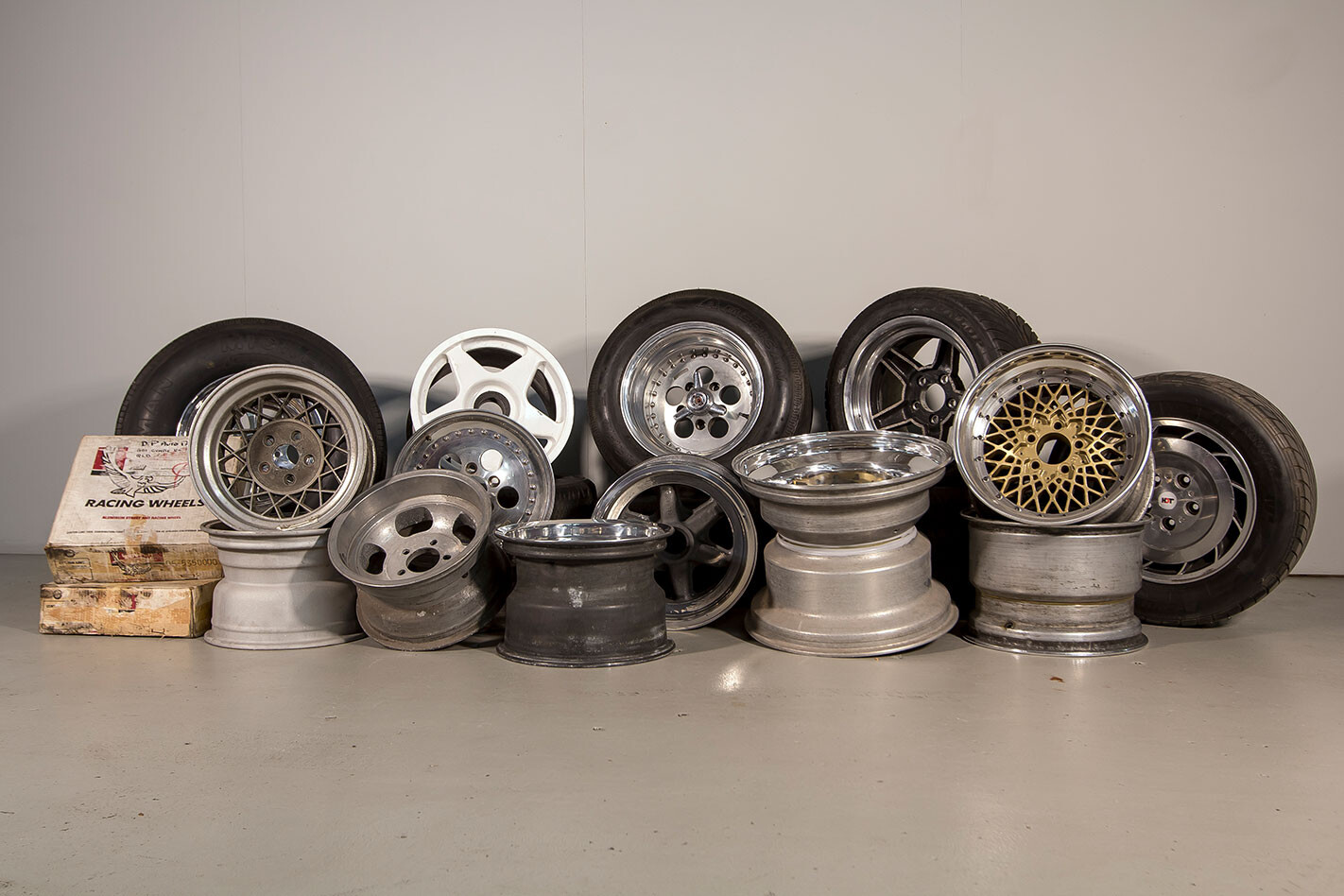
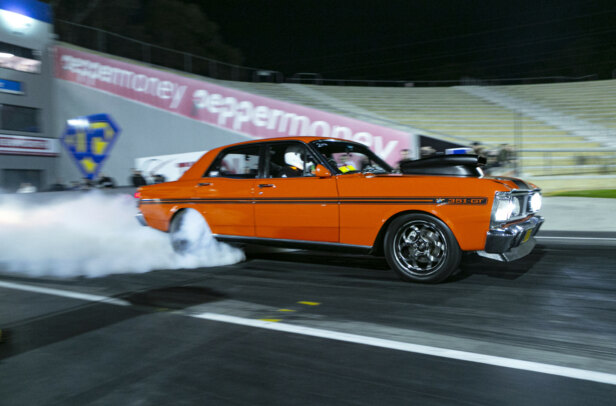
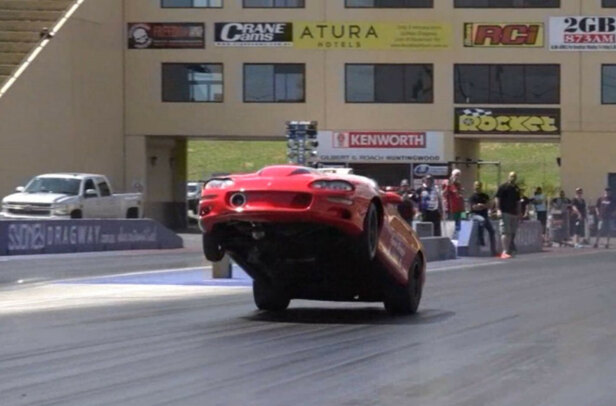
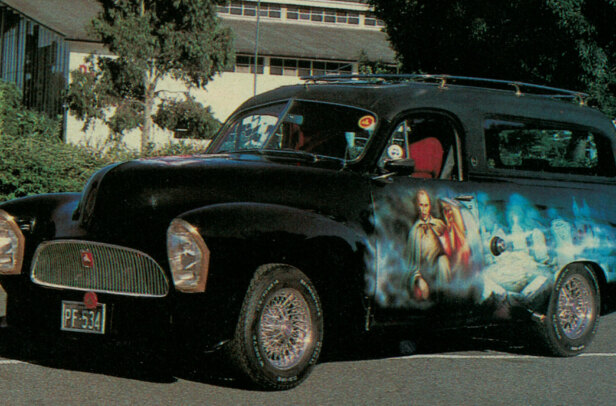
Comments